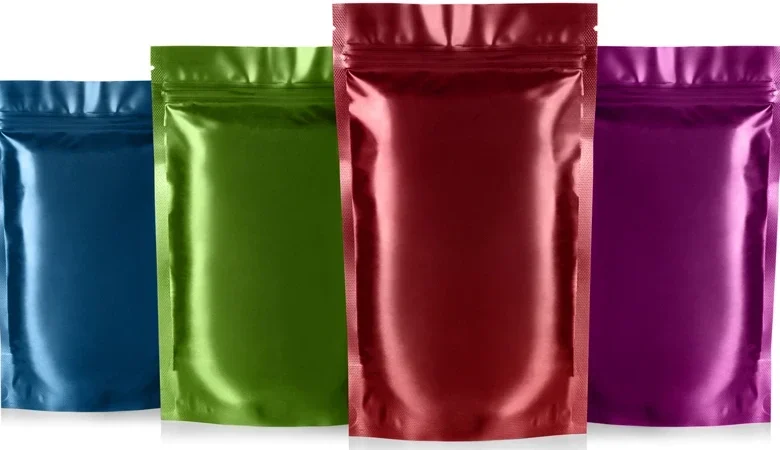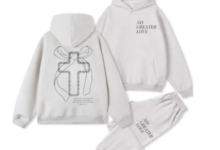Why Flexible Bags Are Quietly Taking Over Retail Shelves Everywhere

If you’ve recently strolled down the aisles of your local grocery store or a trendy boutique, you may have noticed a quiet revolution unfolding in the world of packaging.
Flexible bags—often understated and seemingly simple—are becoming the new packaging favorite for a wide range of products, from snacks and beverages to clothing and pet food.
But what’s driving this surge in popularity? Why are flexible bags quietly taking over retail shelves everywhere?
In this article, we’ll explore the growing trend of flexible bags in retail, the reasons behind their rise, and why this packaging solution is poised to stay.
The Rise of Flexible Bags: A Quiet but Powerful Shift
At first glance, flexible bags might seem like just another form of packaging—nothing particularly special. But in reality, these bags are transforming the packaging landscape.
Whether it’s packaging dog treats, personal care products, or packaging medical cannabis, flexible bags are emerging as a clear front-runner in many retail categories.
Flexible bags, including stand-up pouches, flat pouches, and side gusset bags, are increasingly being used by brands seeking a more sustainable, cost-effective, and visually engaging way to present their products.
Their rise is driven by several key factors that make them a compelling choice for modern retailers.
Key Reasons Why Flexible Bags Are Dominating Retail Shelves
1. Sustainability at the Forefront
Consumers are more conscious than ever about the environmental impact of their purchases, and packaging plays a significant role in their decision-making process. Flexible bags often come out on top in terms of sustainability.
- Less Material Usage: Flexible bags require less material to produce compared to traditional packaging options like glass jars or rigid boxes.
- Lower Carbon Footprint: Their lightweight nature reduces shipping costs and emissions, making them a greener choice in a world that’s increasingly concerned about sustainability.
- Recyclability: Many flexible bags are made from recyclable materials, which appeals to eco-conscious shoppers. Brands that use flexible packaging are seen as more aligned with sustainable practices, a key factor in consumer loyalty today.
2. Cost-Effectiveness
When it comes to keeping packaging costs down, flexible bags have a clear advantage over their rigid counterparts. Here’s why:
- Lower Production Costs: Flexible packaging materials are generally more affordable to produce than glass, plastic, or metal containers.
- Reduced Shipping Costs: Due to their lighter weight, flexible bags cut down on shipping expenses, which is especially significant for brands that distribute products globally.
- Efficient Storage: Flexible bags are easier to store because they’re compact and can be stacked efficiently, reducing warehouse space requirements.
For small businesses or emerging brands, these cost benefits can be game-changers, allowing them to allocate more resources toward marketing or product innovation.
3. Consumer Convenience
When it comes to convenience, flexible bags are hard to beat. With features that prioritize ease of use, flexible bags offer practical advantages for consumers.
- Resealable Closures: Many flexible bags come with resealable zippers, which help preserve the product’s freshness while enhancing convenience. Whether it’s for packaging medical edibles or pet food, resealable bags are highly valued by consumers.
- Portability: Flexible bags are lightweight and easy to carry, making them the perfect packaging for on-the-go products. Think of snack pouches, coffee bags, or travel-sized beauty products—they’re all ideal candidates for flexible packaging.
- Space-Saving: Flexible bags are great for maximizing shelf space, which benefits both retailers and consumers. Their ability to stand up on their own and fit into smaller spaces is a major plus, especially in busy stores with limited shelf real estate.
4. Visually Appealing and Customizable Designs
One of the most compelling reasons flexible bags are gaining ground on retail shelves is their ability to stand out with bold, eye-catching designs.
- Full-Color Graphics: Flexible bags provide ample surface area for vibrant, high-quality prints, making it easier for brands to communicate their identity and stand out among competitors.
- Unique Shapes and Styles: Pouches come in various shapes and sizes, offering brands the ability to create unique packaging that reflects their personality. Whether it’s a sleek, minimalist design or an attention-grabbing, colorful bag, flexible packaging offers endless customization opportunities.
- Window Pouches: Many flexible bags feature clear windows, allowing customers to see the product inside. This transparency can enhance consumer trust and boost sales, especially in categories like food and beauty products.
5. The Flexibility of Product Application
Flexible bags aren’t just for snacks or household goods—they’re rapidly expanding into other industries, further solidifying their presence on retail shelves. Here’s a breakdown of some of the diverse sectors benefiting from flexible packaging:
- Food and Beverage: Whether it’s chips, granola, or sauces, flexible bags are an ideal packaging solution for dry foods, liquids, and snacks. Stand-up pouches and mylar bags are widely used in the food industry due to their versatility, freshness-preserving abilities, and consumer-friendly features.
- Beauty and Personal Care: Many beauty brands are embracing flexible bags to package everything from shampoos and lotions to facial masks. The sleek, modern look of flexible pouches also aligns with the aesthetics of many high-end beauty brands.
- Pet Products: Pet food and treats are often packaged in flexible bags, especially those designed with resealable closures to preserve freshness.
- Apparel and Retail: Even fashion brands are using flexible bags for packaging their products, often utilizing them for protective packaging, branded items, or gift sets.
The Competitive Edge for Brands
The retail market is fiercely competitive, and brands are constantly looking for ways to differentiate themselves. Flexible bags provide a strategic advantage in several key areas:
- Brand Storytelling: Packaging is an extension of a brand’s story, and flexible bags offer creative freedom to craft unique narratives through custom designs, colors, and textures.
- Sustainability as a Selling Point: Today’s consumers are increasingly concerned about the environmental impact of their purchases. Brands that opt for flexible packaging can communicate their commitment to sustainability and capture a growing market of eco-conscious buyers.
- Increased Consumer Engagement: Flexible bags can encourage interaction through features like easy-open closures, portion control, or even interactive designs. Brands can create packaging that makes the shopping experience more enjoyable and memorable.
The Future of Flexible Bags in Retail
Looking ahead, the role of flexible bags in retail is only expected to grow. As sustainability becomes a more significant driver of consumer choices, and as brands continue to prioritize convenience, cost-efficiency, and innovation, flexible bags will likely become even more ubiquitous.
Advancements in material technology, such as biodegradable and compostable options, will continue to enhance the sustainability aspect of flexible bags. As these bags evolve, they will offer even more benefits for both brands and consumers.
Conclusion
The rise of flexible bags on retail shelves is not just a trend—it’s a sign of a broader shift in the packaging industry. Their cost-effectiveness, sustainability, consumer convenience, and customization options make them an ideal solution for a variety of industries looking to stay competitive in a crowded marketplace.
As we move into 2025, flexible bags are proving to be more than just a passing phase. For brands looking to stay ahead of the curve, embracing flexible packaging could be the key to success—helping them meet the evolving demands of both consumers and the environment.
If you’re not already using flexible bags in your retail strategy, now is the perfect time to consider their potential. The future of packaging is flexible, and it’s ready for your brand to take full advantage.







